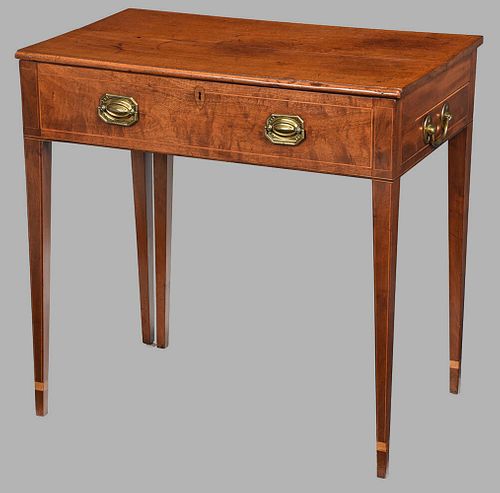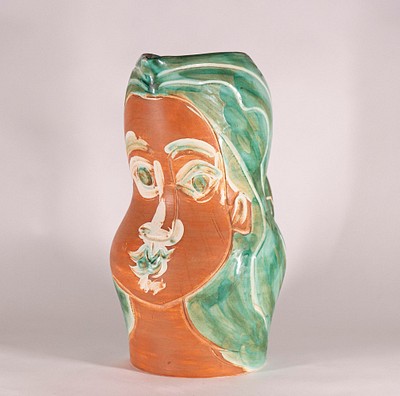Rare Southern Inlaid Mahogany Writing Table
Lot 11
About Seller
Keno Auctions
127 East 69th Street
New York, NY 10021
United States
Keno Auctions is renowned for our expertise in fine and decorative arts. With more than 30 years experience, founder Leigh Keno has established a brilliant team of experts specializing in fine art, furniture, decorative arts and jewelry.
Estimate:
$25 - $10,000
Absentee vs Live bid
Two ways to bid:
- Leave a max absentee bid and the platform will bid on your behalf up to your maximum bid during the live auction.
- Bid live during the auction and your bids will be submitted real-time to the auctioneer.
Bid Increments
| Price | Bid Increment |
|---|---|
| $0 | $25 |
| $100 | $100 |
| $2,000 | $250 |
| $5,000 | $500 |
| $30,000 | $2,500 |
| $50,000 | $5,000 |
| $100,000 | $10,000 |
| $500,000 | $10,000 |
| $1,000,000 | $10,000 |
About Auction
By Keno Auctions
Jun 2, 2021
Set Reminder
2021-06-02 19:00:00
2021-06-02 19:00:00
America/New_York
Bidsquare
Bidsquare : Memorial Week Estate Auction
https://www.bidsquare.com/auctions/keno/memorial-week-estate-auction-7014
Keno Auctions Leigh@kenoauctions.com
Keno Auctions Leigh@kenoauctions.com
- Lot Description
Probably Savannah area, 1790-1810
With an inlaid molded top hinged at center opening to fitted writing desk with ratcheted writing board, flanked by fittings for ink and pens, over highly figured inlaid walnut false drawer with teardrop escutcheon and original brass pulls and octagonal brasses, one case side fitted with single dovetailed drawer, other side with matching brass carrying handle, finely tapered inlaid legs, poplar and white pine secondary with cherry gate.
H. 29 1/2 in., W. 31in., D. 18 3/4 in., opens to 37 in.
Provenance: Descended in the family of Thomas Spalding of Savannah and was used on the Spalding Plantation. It was purchased from a direct descendant of Thomas Spalding who lived in Damier, Georgia. The only child of James Spalding, a prosperous trader in the St. Simons Island fort town of Frederica, Thomas Spalding was born in 1774. His father, the wealthiest man in Glynn County, owned 5,550 acres of land and 94 slaves in 1790. Thomas, a lawyer, was educated in New England and Savannah and served in the Georgia House in 1794, in the Georgia Senate 1803-1804, 1808-1810, 1812-1814, and in the U.S. Congress in 1806. After selling his St. Simons estate, Orange Grove, Thomas Spalding bought 4,000 acres on Sapelo Island and began growing sea island cotton as well as sugar cane which he processed at his mills on the island. He died at age 77 in 1851.; Private Georgia Collection
Condition: One break and repair with plugged screws at one rear leg (that leg and the swing leg lack the inlaid cuff and skirt banding seen on the other legs, suggesting that they are (probably first-half 19th century replacements), some dents and stains to top, lock and lock catch replaced, some molding repairs to ratcheted writing board, minor warping at gate leg, one bottom board of drawer likely replaced, other minor repairs to drawers secondary, minor sun fading, other age appropriate abrasion, etc. - Shipping Info
-
Buyer Pays Shipping Cost
-
- Payment & Auction Policies
-
Available payment options
-
-
- Buyer's Premium



 EUR
EUR CAD
CAD AUD
AUD GBP
GBP MXN
MXN HKD
HKD CNY
CNY MYR
MYR SEK
SEK SGD
SGD CHF
CHF THB
THB






























